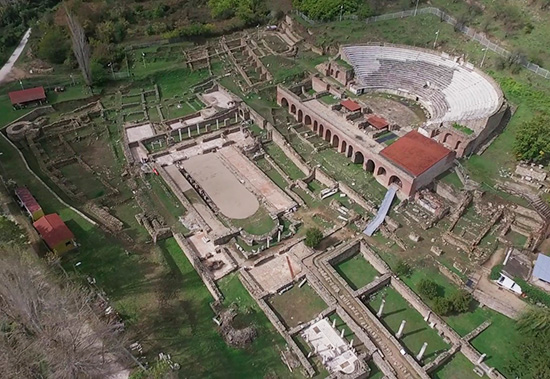DID U KNOW that Heraclea Lyncestis, a gem in the heart of Macedonia, was a creation of the legendary Philip II of Macedon, dedicated to the Greek hero Heracles?
Situated near the contemporary town of Bitola, Heraclea Lyncestis is a testament to Macedonia’s vibrant historical tapestry. Founded in the 4th century BC by Philip II, this city quickly rose to prominence, becoming a significant center during both the Hellenistic and Roman periods. Its strategic position made it not only a bustling trade hub but also a focal point for various military endeavors.
Walking through Heraclea today, one can almost hear the echoes of the past. The ancient theatre, a marvel of Hellenistic architecture, once played host to a myriad of performances, and later, during the Roman reign, transformed into an arena for thrilling gladiator combats. The early Christian basilicas, dating back to the 4th and 6th centuries AD, are a visual treat with their exquisite mosaics narrating biblical tales. These mosaics, with their vibrant colors and intricate designs, provide insights into the artistic and spiritual inclinations of the city’s inhabitants.
The city’s fortifications, remnants of its once-mighty walls, stand as silent witnesses to Heraclea’s defensive prowess and the architectural genius of the Macedonians and Romans. These walls have withstood the test of time, much like the legacy of Heraclea itself.
In the modern era, Heraclea Lyncestis has evolved into a significant archaeological site, drawing scholars, historians, and tourists alike. Each excavation, each discovery, adds a new chapter to the already rich narrative of the city. As one of the most prominent ancient cities in the Macedonian territory, Heraclea continues to captivate and educate, bridging the gap between the past and the present.
